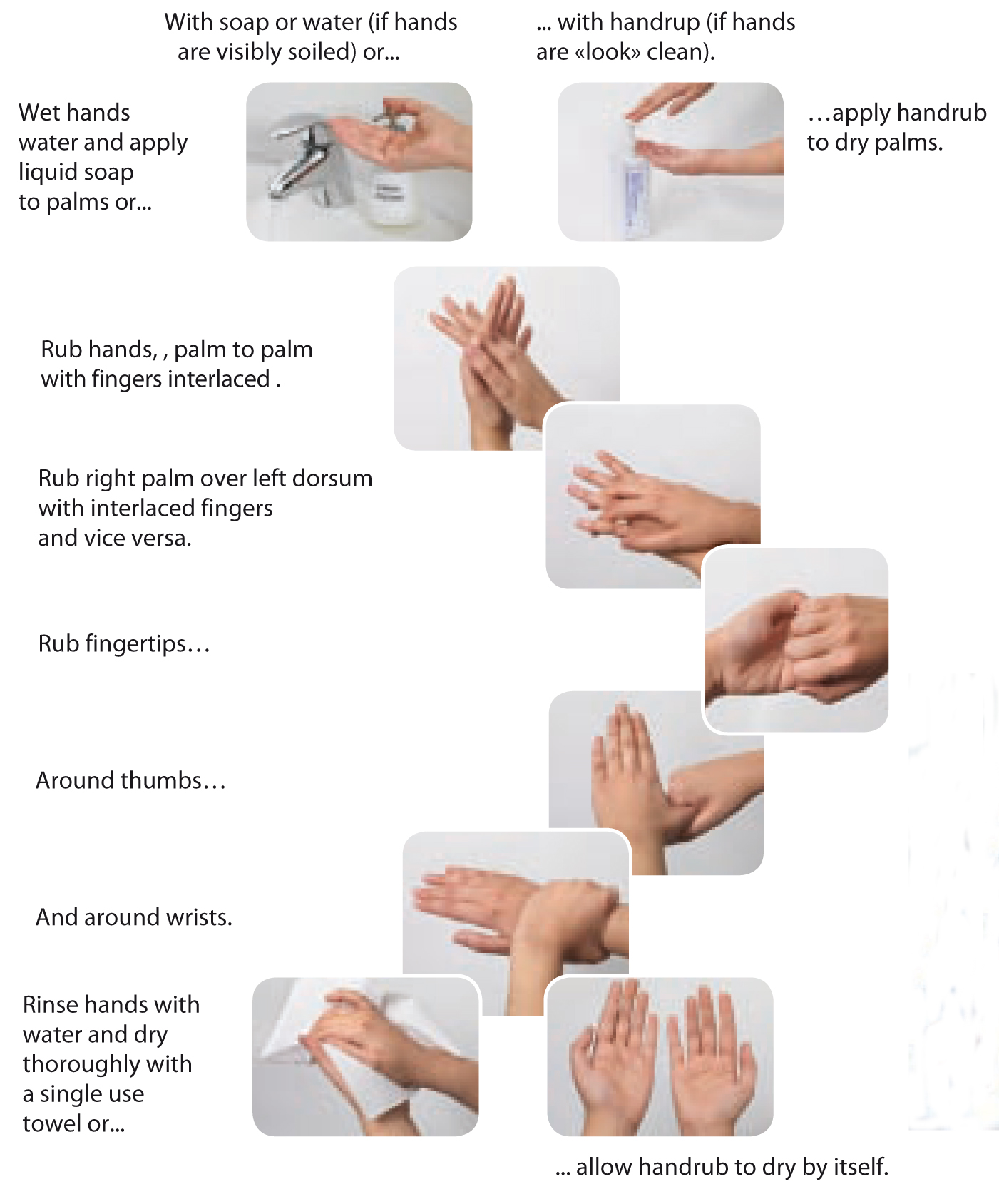Ten key questions concerning hand hygiene
- What are the healthcare-associated infections and how are they transmitted?
- What is hand hygiene?
- Which is better, washing or disinfecting your hands?
- Why is hand hygiene important?
- When must hand cleansing be performed?
- Who must cleanse their hands?
- How is hand cleansing performed?
- How long does it take to cleanse one’s hands?
- What factors must be taken into account to prevent damaging the skin on one’s hands?
- Can wearing gloves be a substitute for hand cleansing?
What are the healthcare-associated infections and how are they transmitted?
Healthcare-associated infections are those acquired at any point in time during the care provided in the healthcare system. These infections may be transmitted in many ways (respiratory tract, digestive tract, by contact), but the way they are most often transmitted is by hand contact by healthcare workers.
What is hand hygiene?
Hand hygiene is understood as being a procedure for the purpose of reducing the number of microorganisms on the skin of one’s hands. When this procedure is performed with soap and water, it is termed hand washing. When it is performed with an alcohol-based preparation or with antiseptic soap, it is called hand disinfection.
Which is better, washing or disinfecting your hands?
When one’s hands are soiled, they should be washed with soap and water, given that soap facilitates eliminating soiling. When one’s hands are contaminated, but are not visibly soiled, the procedure of choice is disinfection using alcohol-based preparations, given that antiseptics eliminate a greater number of microorganisms.
Why is hand hygiene important?
Because it is the simplest and most effective way we all have of preventing the spread of infections transmitted by contact. Different publications show hand hygiene to contribute to reducing healthcare-associated infections.
When must hand cleansing be performed?
Always before and after coming into contact with anyone requiring care at any point in the health system. The World Health Organization (WHO) additionally recommends the following: Always before performing a clean / aseptic procedure. Always after there having been any possibility of contact with body fluids. Always after contact with the patient’s surroundings.
Who must cleanse their hands?
All healthcare workers involved in caring for patients, independently of whatever the patients’ diagnoses may be. Hand hygiene must also be performed by the patients, their family members and the visitors caring for them.
How is hand cleansing performed?

How long does it take to cleanse one’s hands?
For hand washing, one’s hand should be rubbed with soap and water for 15 seconds, plus the length of time necessary for rinsing and then drying. Hand rubbing with alcohol-based preparations must be continued until hands are thoroughly dry. The amount of preparation used must allow one to rub one’s hands for at least 15 seconds. If the manufacturer were to recommend a longer time, the manufacturer’s instructions must always be followed.
What factors must be taken into account to prevent damaging the skin on one’s hands?
To prevent skin problems, it is very important that one’s hands been perfectly dry on completing the procedure. After washing with soap and water, the necessary paper towels must be used to ensure that one’s hands are thoroughly dry. Similarly, when cleansing with an alcohol-based preparation, one must rub one’s hands until the preparation has completely dried. It is advisable for healthcare workers to take care of their hands by moisturizing them several times a day, preferably after finishing work for the day.
Can wearing gloves be a substitute for hand cleansing?
No, never. Gloves can in no case be a substitute for hand cleansing. If gloves are worn, they must always be changed between one patient and the next, and every time they are removed, one’s hands must be cleansed.